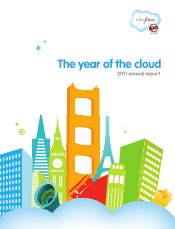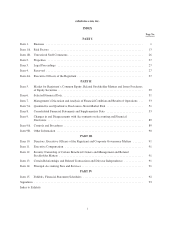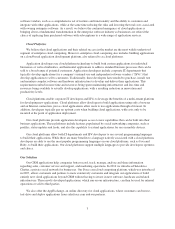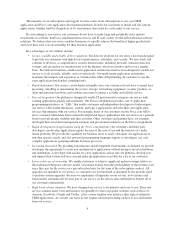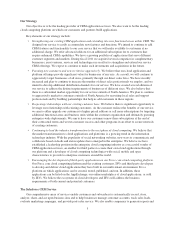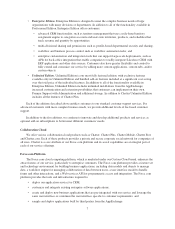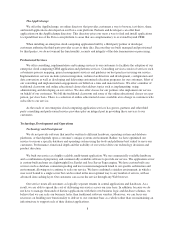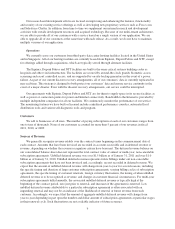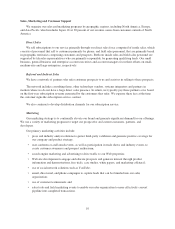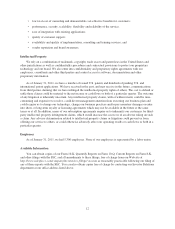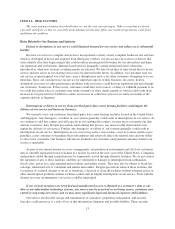Salesforce.com 2011 Annual Report Download - page 11
Download and view the complete annual report
Please find page 11 of the 2011 Salesforce.com annual report below. You can navigate through the pages in the report by either clicking on the pages listed below, or by using the keyword search tool below to find specific information within the annual report.software vendors, such as a comprehensive set of features and functionality and the ability to customize and
integrate with other applications, while at the same time reducing the risks and lowering the total costs associated
with owning enterprise software. As a result, we believe the continued emergence of cloud applications is
bringing about a fundamental transformation in the enterprise software industry as businesses are offered the
choice of replacing their purchased software with subscriptions to a wide range of application services.
Cloud Platforms
We believe that cloud applications and their related success in the market are the most widely understood
segment of enterprise cloud computing. However, enterprise cloud computing also includes building applications
on a cloud-based application development platform, also referred to as cloud platforms.
Application developers use cloud platform technology to build both custom applications for individual
businesses or vertical industries, and horizontal applications to address standard business processes that can be
sold to a broad range of potential customers. Application developers include corporate IT departments that
typically develop applications for a company’s internal-use and independent software vendors (“ISVs”) that
develop applications to sell to customers. Traditionally, these developers have needed to purchase, install, test
and maintain complex software and hardware infrastructure to develop and deliver their applications. This
requirement resulted in more time and resources being spent maintaining infrastructure and less time and
resources being available to actually develop applications, with a resulting reduction in innovation and
productivity levels.
Cloud platforms enable corporate IT developers and ISVs to leverage the benefits of a multi-tenant platform
for developing new applications. Cloud platforms allow developers to build applications using only a browser
and an Internet connection, just as cloud applications allow users to use applications through a browser. In
addition, developers typically pay no upfront costs when building cloud applications, with costs only to be
incurred at the point of application deployment.
Our cloud platforms provide application developers access to new capabilities that can be built into their
business applications. These platforms include features popularized by social networking companies, such as
profiles, status updates and feeds; and also the capability to extend applications for use on mobile devices.
Our cloud platforms allow both IT departments and ISV developers to use several programming languages
to build their applications. While there are many benefits to a language natively associated with a cloud platform,
developers are able to use the most popular programming languages on our cloud platforms, such as Java and
Ruby, to build their applications. Our cloud platforms support multiple languages to provide developers openness
and choice.
Our Solution
Our CRM applications help companies better record, track, manage, analyze and share information
regarding sales, customer service and support, and marketing operations. In 2010 we introduced Salesforce
Chatter, a private social network for businesses. Our Force.com cloud computing platform, which was introduced
in 2007, allows customers and partners to more extensively customize and integrate our applications or build
entirely new cloud applications beyond CRM without having to invest in new software, hardware and related
infrastructure. These newly developed applications, which run on our infrastructure, can then be used for internal
operations or sold to third parties.
We also offer the AppExchange, an online directory for cloud applications, where customers can browse,
test-drive and deploy applications from salesforce.com and our partners.
3

